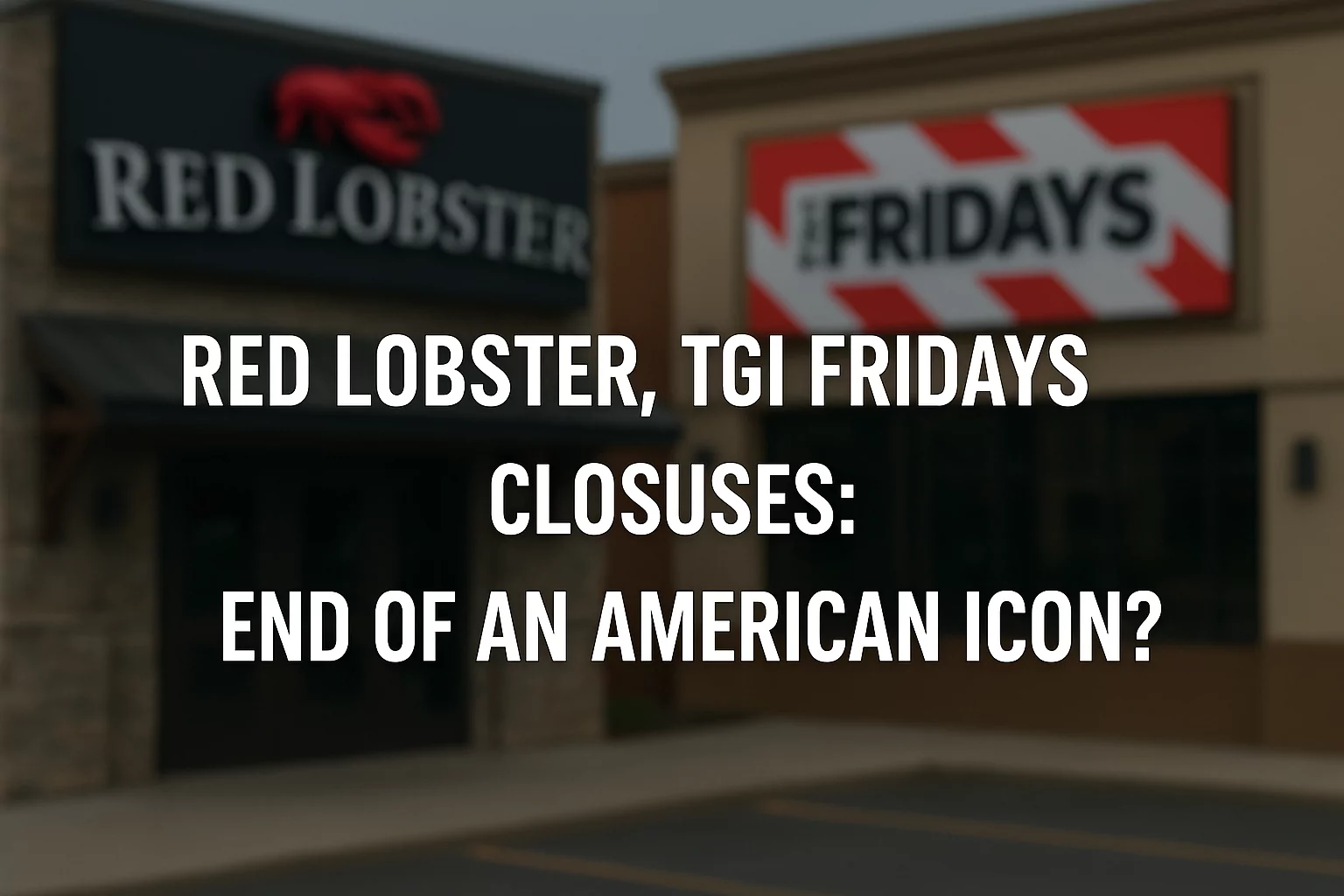Red Lobster TGI Fridays Closing: End of an American Icon?

Yes – the closures of Red Lobster and TGI Fridays reflect a changing era in American dining. Both chains, once pillars of casual dining, have been significantly downsizing—resulting from bankruptcies, shifting consumer trends, and rising costs—signaling not just closures, but the end of a familiar chapter in mid‑tier restaurant culture.
Why Are These Chains Closing Locations?
Pandemic Aftereffects and Changing Habits
COVID-19 accelerated delivery and fast‑casual preferences. Even after restrictions eased, consumers didn’t fully return to sit‑down dining – especially at higher-cost mid-tier chains.
Inflation & Operational Costs
Rising labor, food, and lease costs have squeezed profitability. These chains struggled to pass rising costs onto patrons without losing traffic.
Financial Overextension
Aggressive expansion led to over‑saturation. When economic conditions tightened, underperforming locations – many in expensive leases – couldn’t be sustained.
Red Lobster: Bankruptcy & Over 99 Store Closures
- Filed Chapter 11 in May 2024, after shuttering nearly 100 locations.
- Contributing factors included mismanaged promotions (which reduced margins), escalating supplier and labor costs, and private‑equity ownership complications.
- Moving forward, Red Lobster plans to restructure around healthier locations, modernize operations, and refine its core seafood brand identity.
TGI Fridays: From Over 270 to Just 85 U.S. Locations
- Filed Chapter 11 in November 2024, and has since reduced U.S. footprint from ~270 to about 85 stores as of April 2025.
- Over 100 closures have occurred since late 2023; 60 alone since September 2024.
- Challenges include heavy debt from private equity, failed M&A moves, interest rate burdens, and inability to redesign their value propositions in a changing market.
- Current strategy: transition to predominantly franchise-owned model, pivot menu to attract younger Gen Z diners, and refocus branding; new menu launched May 2025.
Common Struggles Across Both Brands
- Outdated Casual‑Dining Concept
Consumers gravitate toward quicker, fresher, fast‑casual or ghost kitchen options with modern appeal. - Financial Pressure from Private Equity Ownership
Complex debt, dividend extractions, and capital strain from leveraged buyouts have constrained flexibility . - High Operating Expenses
Increasing wages, inflation, and shrinking foot traffic have impacted margins heavily. - Market Saturation & Lease Costs
Overexpansion resulted in cannibalized locations with unsustainable rent—prime candidates for closure.
Are These Chains Future-proof?
| Chain | Recovery Strategy | Outlook |
|---|---|---|
| Red Lobster | Restructuring, optimizing locations, refining seafood focus | Possible survival but in scaled-down form. |
| TGI Fridays | New franchising structure, Gen Z menu, and brand refresh | Pivot underway; success depends on resonating with younger consumers |
Both brands face a steep climb but aren’t written off—brand loyalty and strategic innovation could define their next chapter.
What This Means for Employees & Communities
- Thousands of workers have been laid off as locations close. Transfers are possible, but many have lost jobs abruptly.
- Local economies feel impacts when anchor restaurants disappear—especially in smaller towns.
The New Casual Dining Landscape
Casual dining giants like Red Lobster and TGI Fridays used to define family outings, date nights, and celebratory dinners. But today’s diners want:
- Speed and customization (fast‑casual)
- Healthier & fresh options
- Digital-first experiences
- Unique, experiential dining over generic plates
They demand innovation in menu, ambience, and convenience. Brands failing to adapt have been left behind.
Conclusion
The wave of closures at Red Lobster and TGI Fridays isn’t just a story about business missteps – it’s a signal of a larger shift in how Americans dine. As the industry transforms, these once-iconic chains must reinvent themselves or risk becoming relics of the past. Their survival now depends on adaptability, financial discipline, and relevance to modern tastes.
FAQs
1. Why are so many store closures happening now?
A mix of pandemic hangover, inflation, shifting consumer preferences, and complex private‑equity debt triggered widespread downsizing .
2. Are franchise locations affected?
Mostly company-owned locations are closing; franchises are often unaffected or transitioning ownership – even being the key to brand survival.
3. Will either chain fully disappear?
Not likely – but expect smaller footprints and niche strategies focused on better-performing markets and demographics.









